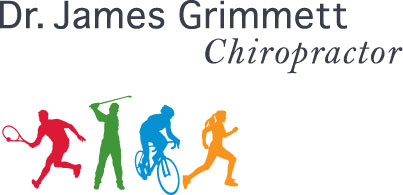Dr. Grimmett is continuing to offer these workshops on a one-on-one basis.
This corrective exercise class has been much needed. The simple reason being a significant portion of the patients I see have underlying weakness. There also lies a lot of confusion in this area.
The following will sound obvious but nevertheless should be said. If there is weakness and treatment does not address the weakness results are likely to be temporary at best. Treatment may in fact make the patient worse as many patients’ tightness is a guarding mechanism for underlying instability. If treatment in these cases focuses on loosening or releasing the tight areas the instability may become more apparent with pain worsening.
Failure to respond to soft tissue therapy, joint mobilizations or adjustments can help in diagnosing. The underlying problem for these patients is more likely to be instability and weakness. For these problems the treatment plan should focus on corrective exercises.
The DNS group in Prague is world renowned for their treatment approach for many common biomechanics problems. This includes low back pain, sciatica, neck and upper back pain, carpal tunnel syndrome, hip and knee problems… The list is long. A good part of their rehabilitation includes corrective exercises aimed at improving posture.
The DNS exercises are based on the developing infants physiological development. It tries to capture how to become upright in the first year of life. This includes the baby’s roll, crawl and squat from the bottom up. Of interest, these exercises very closely parallel postures and movement patterns in yoga. In fact, there is research that comes out of Prague that is helping to explain why aspects of yoga and martial arts has been done for performance enhancement.
The corrective exercises explained and performed in the class are based on DNS and yoga.
This class has the simple goal of building a postural base or foundation from which to move from. The benefits are far reaching. They are the basics from which to walk, lift, push and pull. Be it a boot camp, yoga class, or gym work out with the personal trainer these principles should be engrained in the exercises to help ensure a positive outcome.
When I say benefit, I am referring to reducing the risk of injury while making objective physical gains. The proof really lies in the results. Corrective exercises are a form of treatment and one should feel improvement immediately after doing the exercises.
I am not saying someone with a herniated low back feels 100% improvement after one session but there should be a sense of ease. This might be appreciated as feeling less guarded, able to stand more upright, and/or a lessening of pain.
This sense of improvement is the goal and should be positive reinforcement for the patient to want to keep up with their exercises. These basics are used daily such as in standing and sitting so why not do it better. Yes, time should be allotted daily for a few exercises but gains are commonly appreciated quicker when put into practice with daily living activities.
Perhaps you noticed that the term ‘core exercises’ was not used to describe the class. Yes, these are core exercises but many core exercises are being done with gaps. One of the strength of DNS is that it does not replace core exercises but rather fills in some gaps. This is why many professions such as physiotherapy, chiropractic, osteopathy and sports medicine are studying and applying this form of rehab.
About our Weekly Corrective Workshops
Our Weekly Corrective Workshops are one hour long.
Where:
Main Street Physiotherapy Clinic
4817 Main Street
Vancouver, BC, Canada
V5V 3R9
When:
Tuesday or Wednesday evenings at 8:00pm
Cost:
$60 for the first session and follow up sessions are $30
Please call us to register: (604) 649-0212
